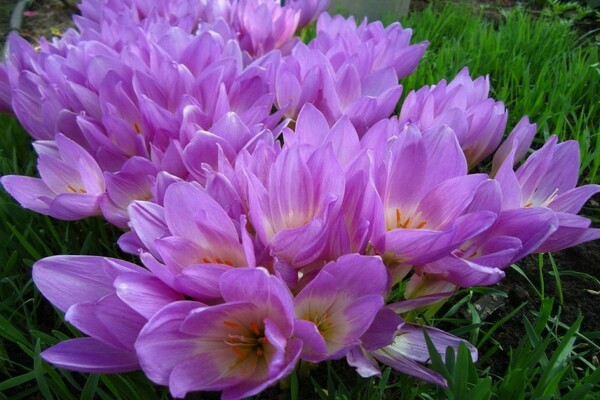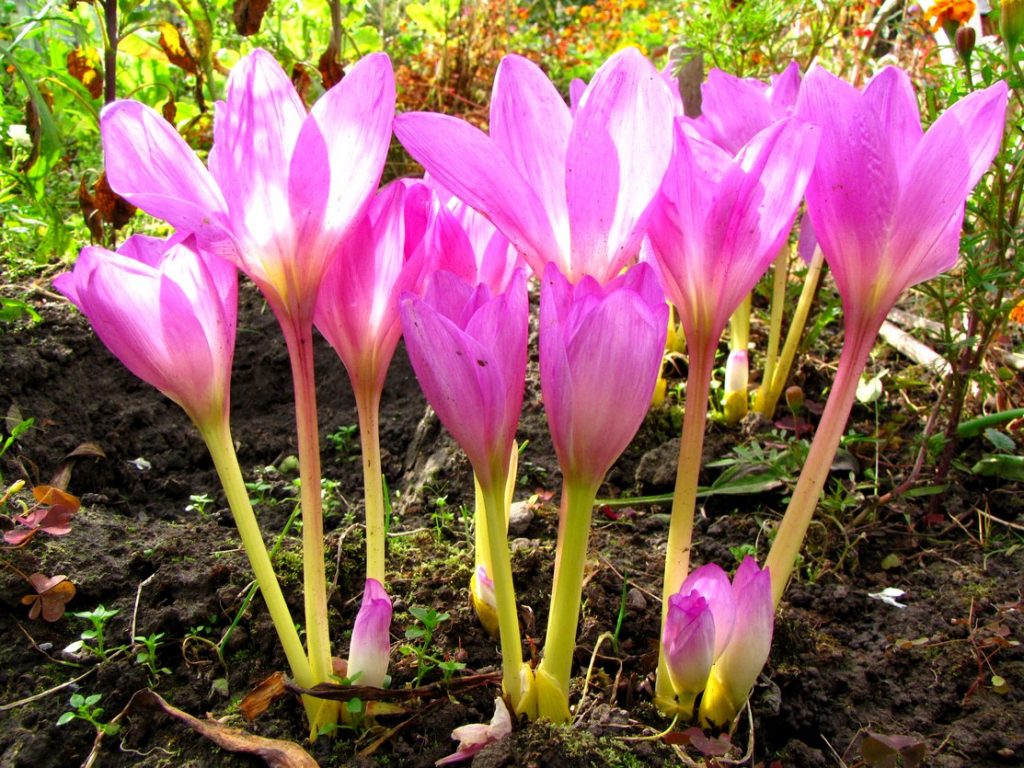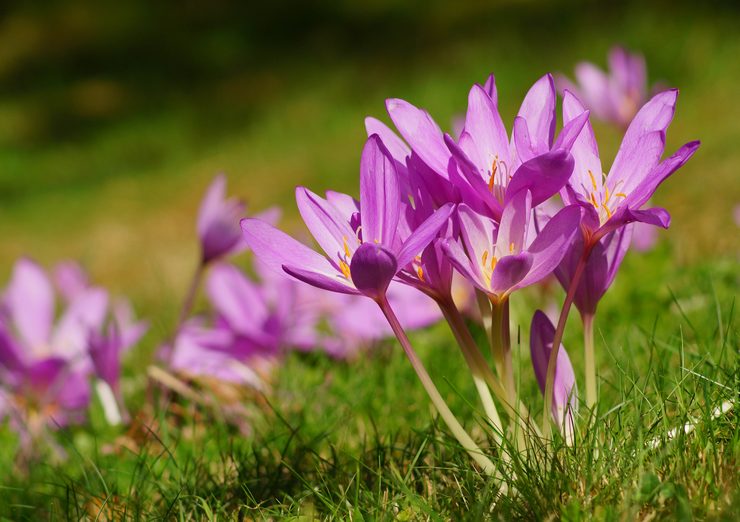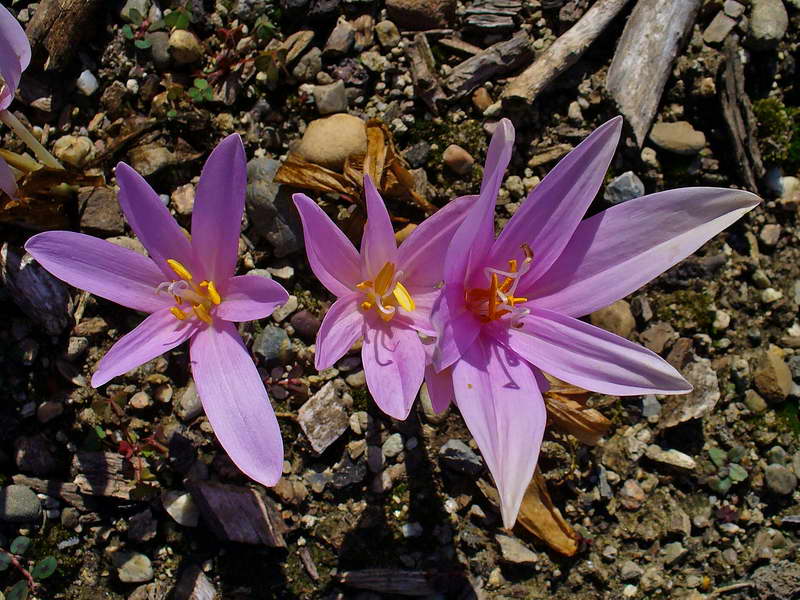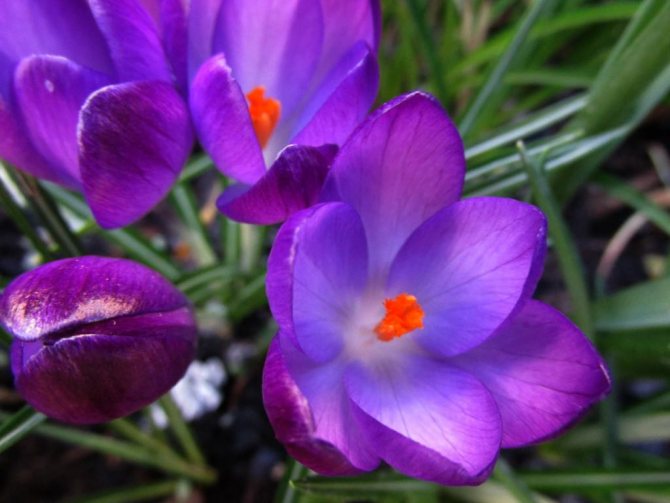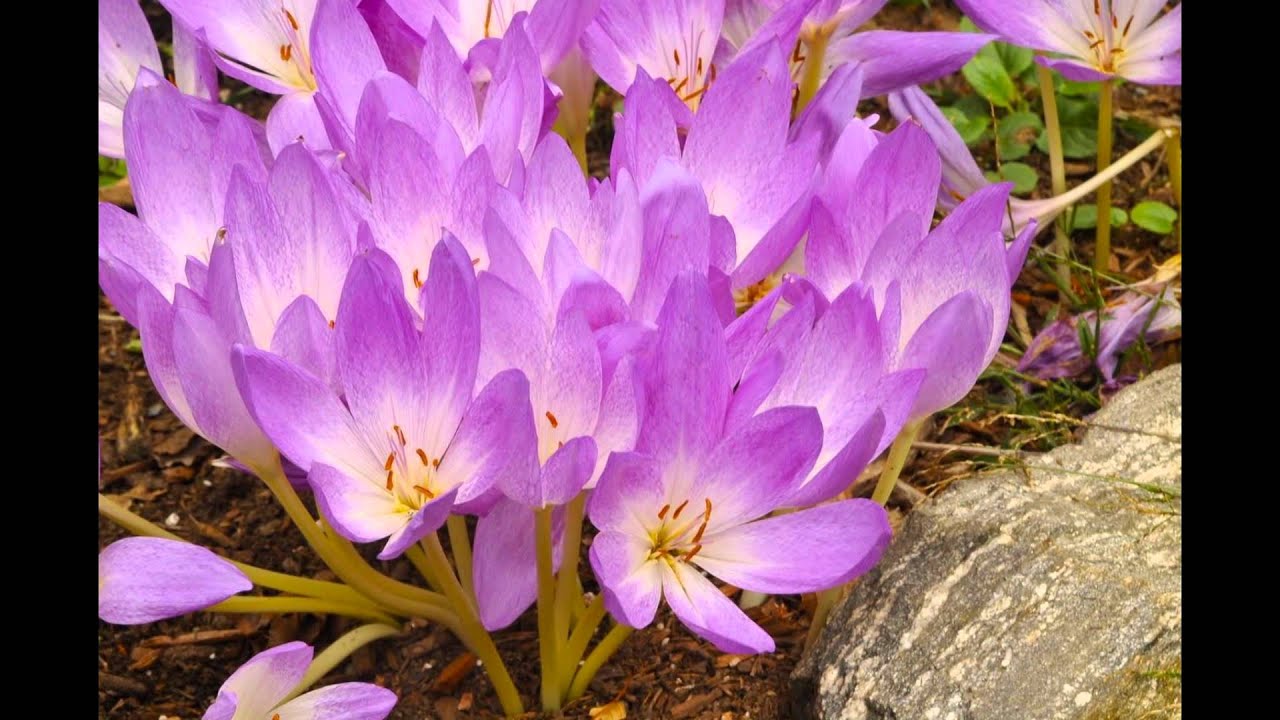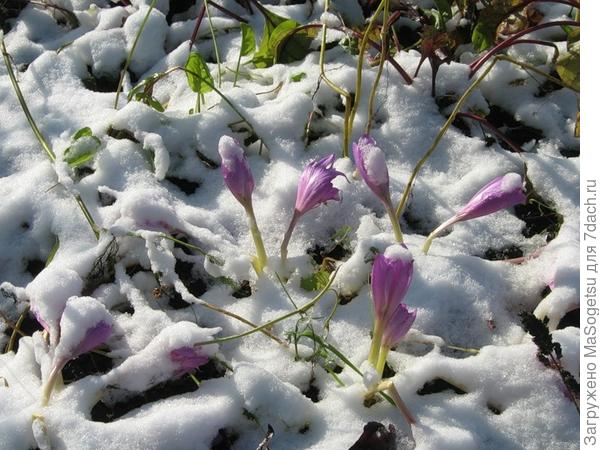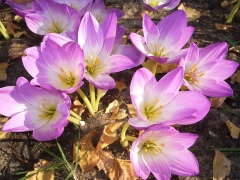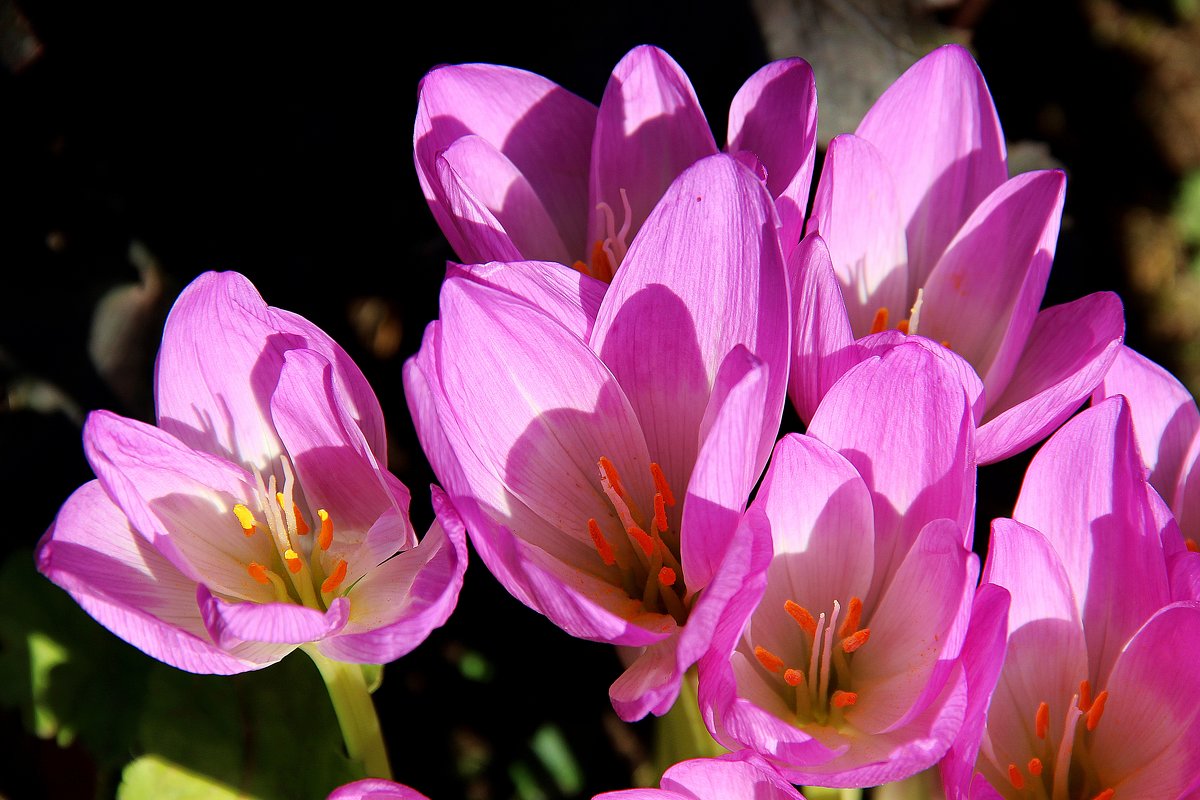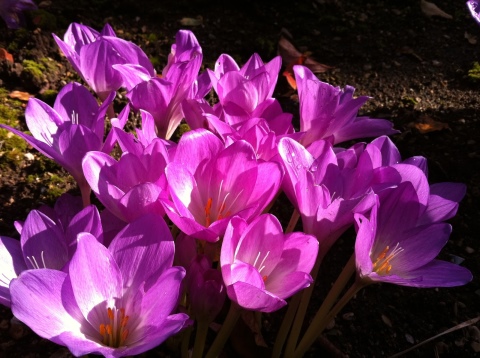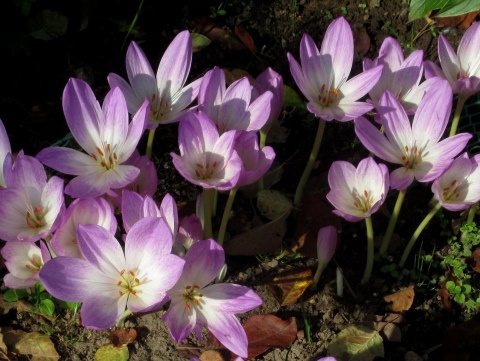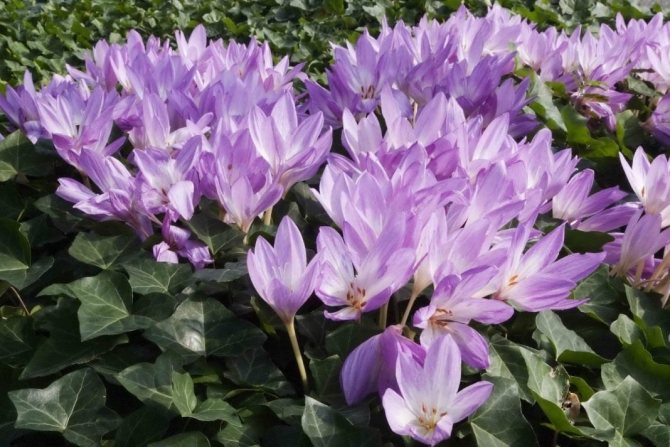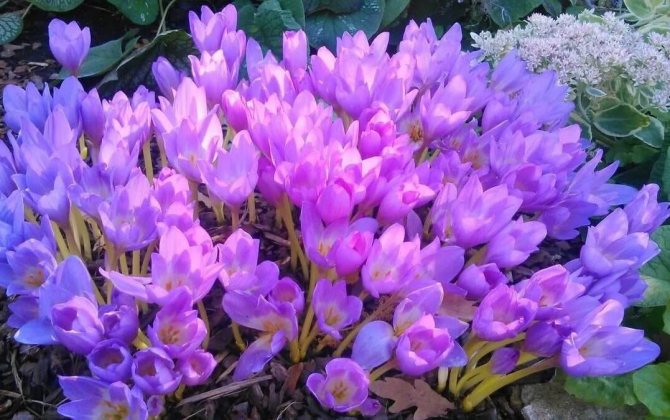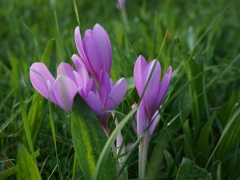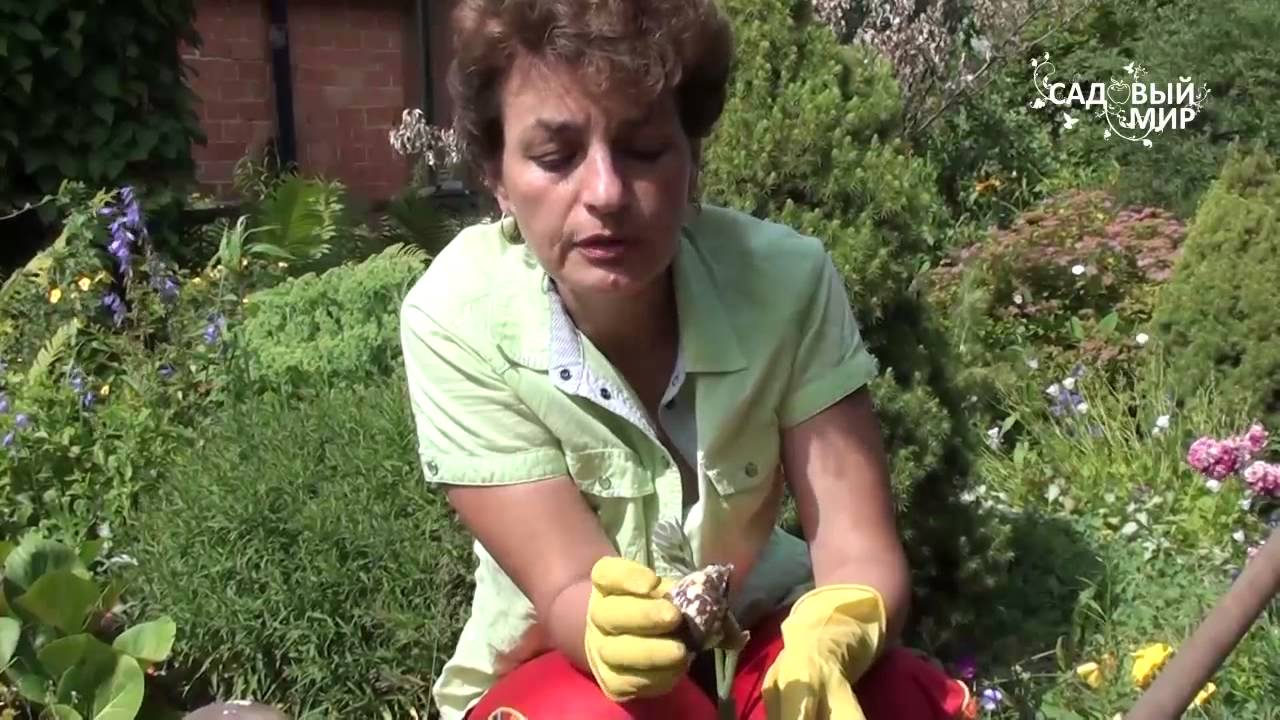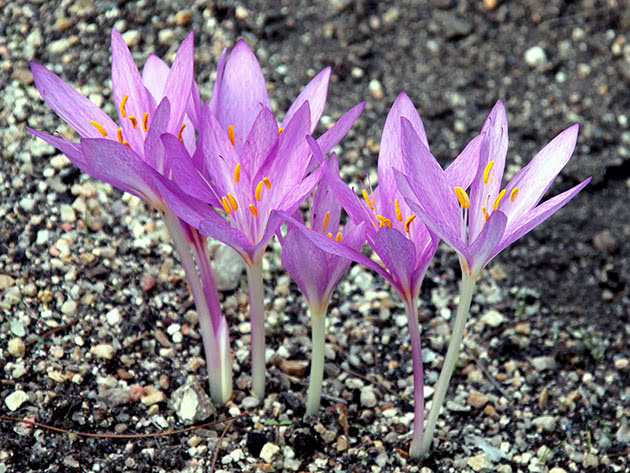Types and varieties of muscari with photos
Armenian Muscari (Muscari armeniacum)
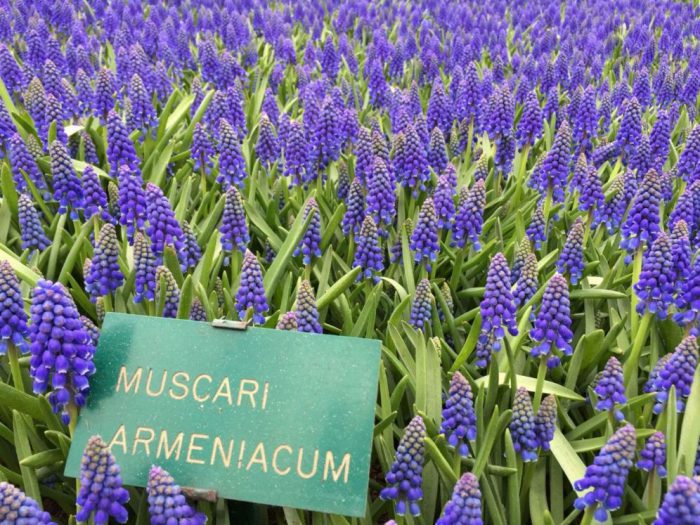
The winter-hardy Armenian muscari (Colchis) is very popular among gardeners. Its flowering begins at the end of spring and lasts about 20 days. This particular species is called "mouse hyacinth". The flowers located at the top of the inflorescences are sterile, and they are colored light blue. The dark blue flowers at the bottom of the peduncle have a white border. The flowers have a pleasant scent.
The most popular varieties:
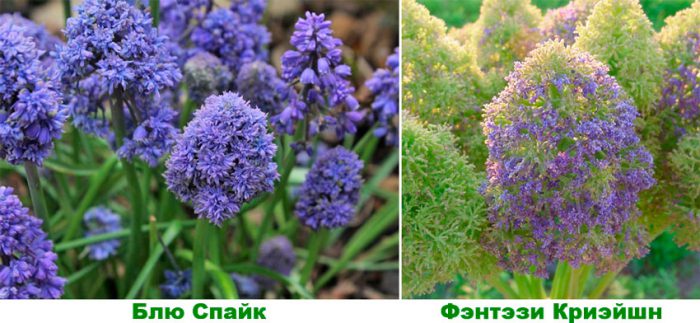
- Muscari Terry Blue Spike. It has a very high decorative effect due to the fact that up to 170 flowers are included in the cluster-shaped inflorescence. Differs in unpretentiousness, is often used for cutting.
- Christmas Pearl. It has very decorative purple flowers.
- Fantasy Creation. A very effective variety due to the combination of greenish blue and blue colors.
Muscari uviform (Muscari botryoides)
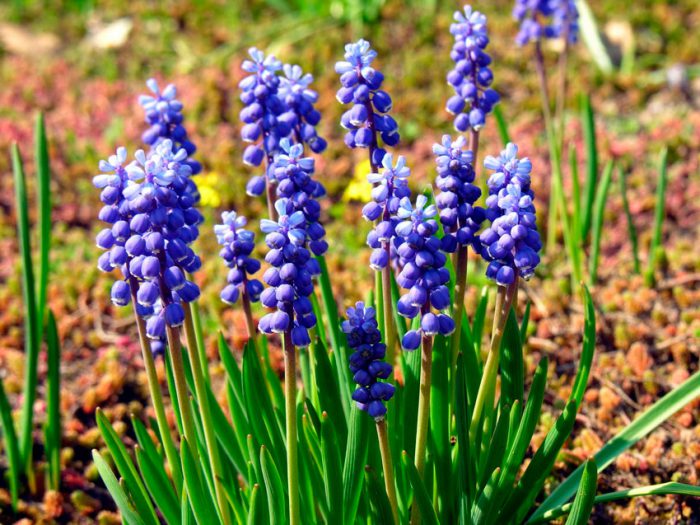
Under natural conditions, this species can be found in the alpine belt of Central and Southern Europe. It is considered the most popular among gardeners since 1576. The flowers of this species are somewhat smaller in comparison with the Armenian muscari. Almost all varieties are colored in different shades of blue, but there are 2 varieties:
- V album. The cluster-shaped inflorescences consist of white flowers similar to pearls.
- V carneum. The flowers are pink in color.
Muscari broadleaf

The leaf plates of this species are very wide and similar to tulip foliage. Inflorescences are dense, cylindrical in shape and dark blue in color. It stands out among other species in that several peduncles can grow from one bulb at once.
Pale Muscari (Muscari pallens)
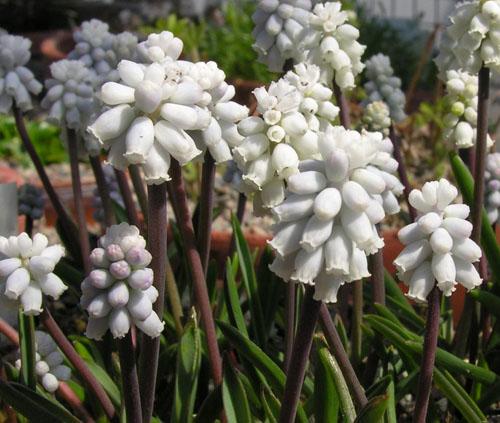
In natural conditions, it can be found on the mountain slopes. Peduncles are low, and small bell-shaped flowers of light blue color appear on them. The most popular variety is White Rose Beauty: the color of its flowers is light pink.
Muscari crested (Muscari comosum)
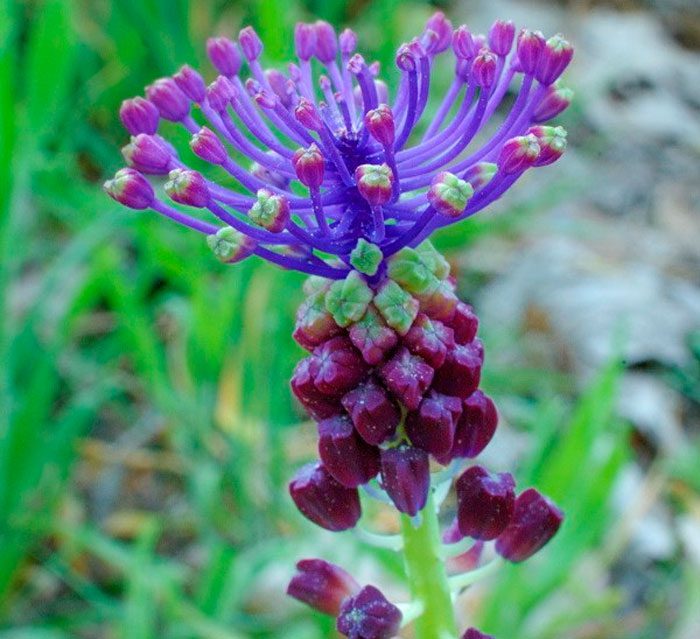
A very spectacular look. In the wild, it prefers to grow among shrubs, on the edges of forests, as well as in dry meadows. On the peduncle is a crest, consisting of purple flowers with arcuate pedicels. This type looks very impressive on lawns or lawns against the background of ground cover grass. The most popular variety is Plumozum: the shoots are highly branched, and they have a large number of sterile purple-lilac flowers.
Muscari Oche, or Tubergena
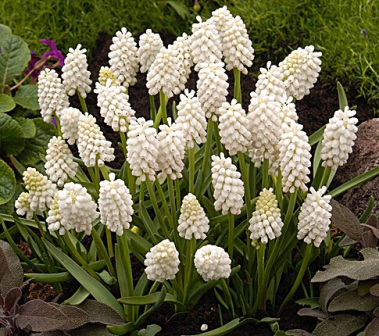
In nature, it can be found in Northwestern Iran. Flowering occurs in mid-spring. Blue flowers have teeth of a lighter color. Good drainage is essential. The most popular among gardeners is the Tubergen variety, which has flowers of a paler color, and the shape of its leaf plates is sickle-shaped.
Muscari pretty (Muscari pulchellum)

This species has a Hebrew name that sounds like kadan nae (beautiful). You can meet such flowers in the parks of Ashkelon. They begin to bloom in winter. Peduncles are low, and on them there are dense short ovoid inflorescences with a deep blue color. The fold teeth are white.
In addition to these species, the following are also very popular among gardeners: long-flowered muscari, changeable, ragweed, white-grass, large-fruited, strange, multi-flowered, dense-flowered, racemose, etc.
Autumn flowering croplands
Autumn
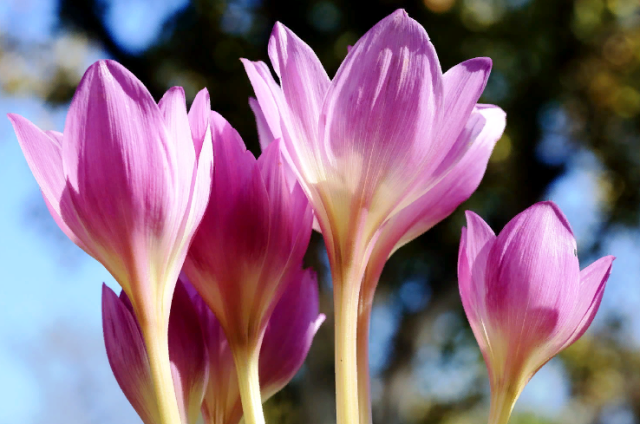
It grows in forest glades and meadows in Europe from Western France and England to Latvia and the Carpathians, sometimes it is found at an altitude of more than 2000 m above sea level. The autumn crocus flower reaches a height of 40 cm, its erect oblong flat leaves develop in spring and by summer they die off. White or light-lilac flowers up to 7 cm in diameter grow in an amount from one to four from one corm.
The most common forms of autumn crocus:
- autumn white crocus - is very rare, from one corm in the second half of September in the amount of five to seven pieces bloom flowers up to 15 cm long with a snow-white perianth with a yellow center;
- double autumn crocus with purple flowers up to 12 cm long and about 5 cm in diameter, consisting of a large number of petals - up to 35 in one flower. Leaves are dark green up to 25 cm long and up to 4 cm wide. Blooms later than other crocus flowers - at the end of October;
- autumn crocus autumn white terry - with double white flowers, in which there are up to 45 petals. Blooms in the second half of September;
- autumn crocus neddiste is a variety bred in the Czech Republic with pale pink flowers.
There are also forms of autumn crocus with purple and dark purple flowers, and the Baconsfield variety has pink-purple flowers with a white center.
Colchicum magnificent
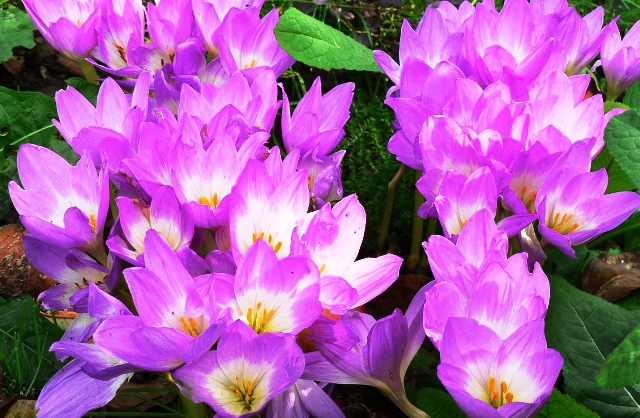
originally from Transcaucasia, Turkey and northern Iran. It grows up to 50 cm high. Bright green leaves with a wavy edge up to 30 cm long and 6 cm wide are already dying off by summer. One corm produces very large lilac-pink or lilac flowers with white long tube that bloom in September. Colchicum magnificent has many garden forms: white, dark red, giant, Turkish and others.
The most popular varieties:
- Huxley is a variety with lilac-pink flowers that gradually turn bright purple;
- Waterlee - purple double flowers;
- Premier is a late blooming variety with bright mauve flowers.
In addition to these two most often grown autumn-flowering species in culture, the crop plants of Fomin, Stevin, Trudy, Sibtrop, Jerusalem, shady, bright, Pannonian, Neapolitan, Kochi, Cilician, Byzantine, variegated, Bornmüller, dark purple and others are also known.
Useful articles from the "Floral" section:
Useful articles for the gardener:
- Boric acid for plants: application in the garden, vegetable garden and flower garden
- When to dig up potatoes for storage in 2019: timing
- When to dig out hazel grouses after flowering and how to store them correctly
- Florist lunar calendar for 2020
- When to plant tulips in fall in 2020: auspicious days
- Mushroom picker calendar 2020: when to collect, auspicious days
- Autumn work in the garden and garden: what needs to be done
- Do I need to dig a garden before winter: timing, what fertilizers to apply
- Apricot compote for the winter: delicious and simple recipes
- How to get rid of aphids on indoor plants at home
Colchicum as a garden culture
Colchicum is a perennial horticultural crop that blooms in August-October. At this time, low peduncles with buds emerge from the corms, which, when blooming, turn into large flowers of a simple bell-shaped shape. They are characterized by a long tube and six bends. Their color can be white, cream, pink, lilac, lilac, violet or purple. Several yellow or bright red stamens emerge from the core of the flowers. In their structure, the flowers of the crocus resemble large crocuses. Flowering usually lasts up to three weeks. Hybrid varieties can be terry. The plant emits a light, elegant scent.
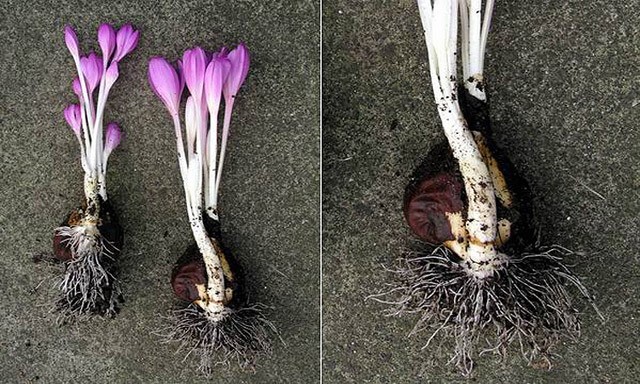
Up to 10 flowers grow from each bulb
In early spring, large, thick, leathery bright green foliage of an elongated lanceolate shape appears from the soil, which grows up to 7 cm in length. In the middle of summer, it dries up, and during the spectacular flowering, the plants remain bare. For this feature in England, the crochet was jokingly nicknamed "the naked lady". Fruits that emerge after flowering are oval or diamond-shaped tricuspid capsules with reddish-brown seeds. To obtain seed, they are left to winter on the plant, since their full maturation occurs only at the beginning of the summer of the next year.
Colchicum is completely unpretentious to growing conditions and blooms profusely both in sunny areas of the garden and in light shade. But you should not plant it under too spreading bushes, since in a strong shade it can be affected by various pests. Both acidic and alkaline soils are suitable for the crocus. But for better plant development, you need to choose a loose and nutritious soil. It must be well-drained, since when the water stagnates, the flower bulbs quickly rot, which leads to the death of the crocus.

During the period of foliage and during the formation of buds, the crocus can be taken out to the balcony
In addition to open ground this flower can be grown indoors using small planters or pots for planting. Several bulbs are planted in one container. Overgrown plants are transplanted every three years. This should be done after the foliage dies off.
Due to its growth in the wild, the crocus is quite frost-resistant, hardy and undemanding to temperature conditions. Therefore, it can be grown outdoors in almost any region of our country.
Harlequin care
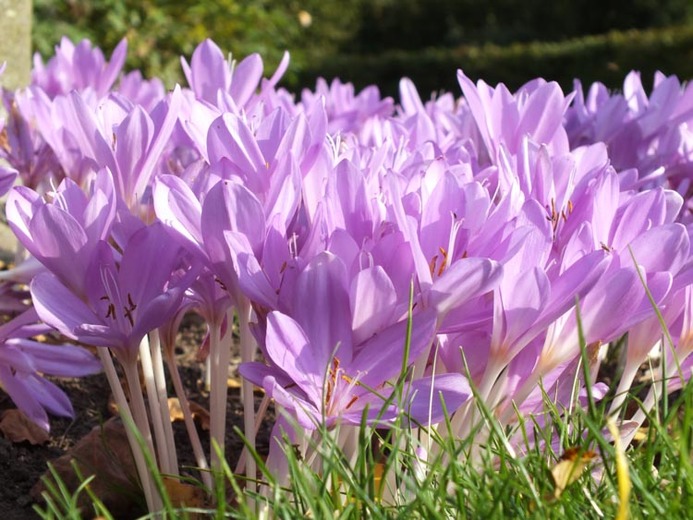
There is nothing difficult in caring for such a plant. Watering should be done only at a time when the plant is blooming, and then this should be done only during periods of prolonged drought and heat. At other times, watering such a flower should not be done, because it will have enough natural precipitation. Remember to avoid waterlogging the soil.
Top dressing is done 2 or 3 times per season. To do this, use a complex mineral fertilizer (30 grams per 1 square meter), while preparing a weak solution (2 grams of a substance per 1 liter of water). Remember that nitrogen must be included in the fertilizer. In autumn, compost should be added to the soil. It is also necessary to systematically loosen the soil surface and remove weeds.
How to transplant

In one and the same place, this flower can be grown for a long time (about 6-7 years), then it must be transplanted to a new place. However, experienced gardeners advise transplanting at least 1 time in 2 or 3 years, otherwise the bulbs grow and it becomes very crowded for them, while the flowers become smaller.
The best time for both planting and transplanting such a plant is August. At this time, the crocus is at rest. However, the bulbs must be excavated in advance, after the leaf plates turn yellow, as a rule, this time falls on the second half of June. It is necessary to carefully remove the soil from the bulbs, and also remove the remaining leaves. Separate the daughter bulbs from the maternal ones, while taking into account that the latter are not used for subsequent planting. Then the bulbs should be carefully washed in running water, after which they are placed in a potassium manganese solution for 30 minutes for disinfection. Then the tubers need to be thoroughly dried and stored in a dry, dark place, while the air temperature should be approximately 24 degrees. With the onset of August, the separated daughter bulbs must be planted in the ground. In this case, the landing rules are exactly the same as those used for planting the crocus (described above). In this case, do not forget to pre-fertilize the soil.
Diseases and pests
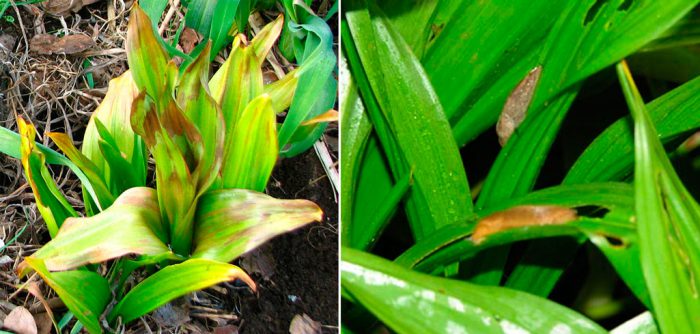
Snails and slugs can settle on such a flower. Such pests feed on its leaves. If the soil is almost constantly waterlogged, then this can cause the development of gray rot. In order to avoid the appearance of slugs, the surface of the rows must be covered with a layer of crushed shells, fine gravel or egg shells. And along the perimeter of the site, you can place plastic gutters into which you need to pour water. They will become an insurmountable obstacle for slugs and snails.
If the crocus is regularly watered abundantly for a long time, then gray rot may appear on it, which belongs to fungal diseases. In the event that the flower is not very infected, then you can try to cure it. To do this, it is recommended to process the bush with a Champion, Topaz, Cuproxat or another remedy similar in effect. Before processing, those parts of the plant that are severely affected should be cut and burned. Then you need to revise the irrigation schedule.

